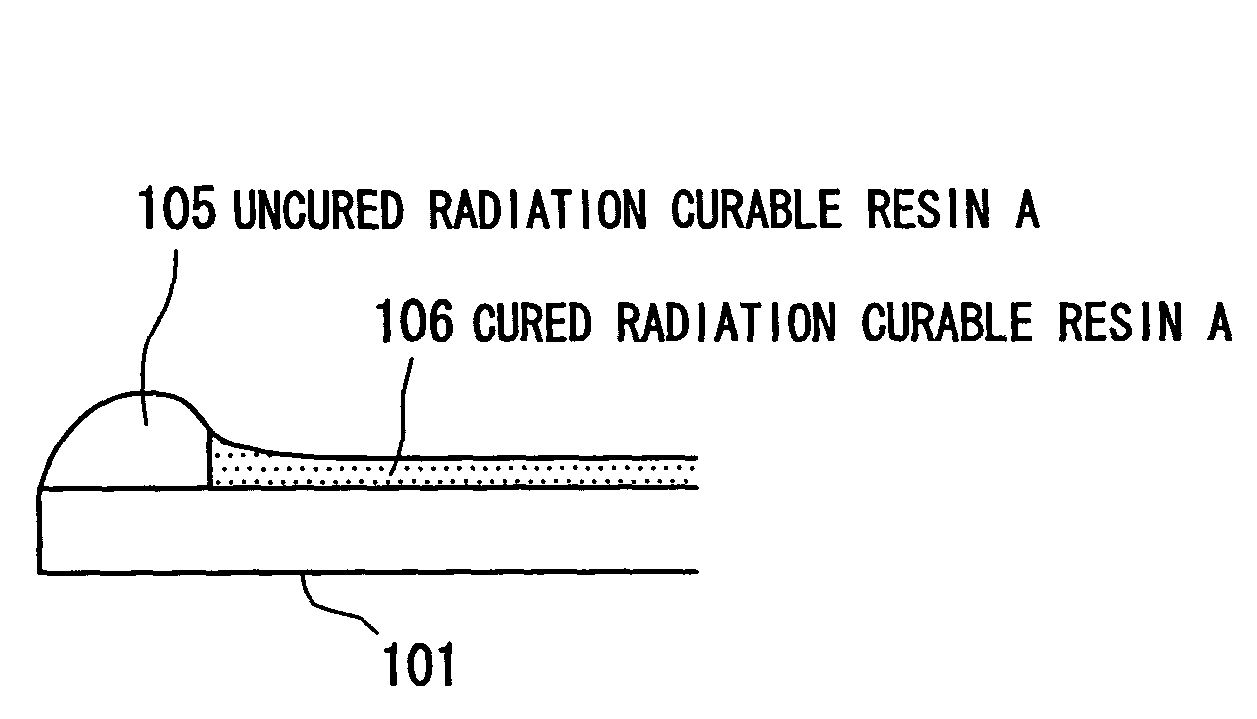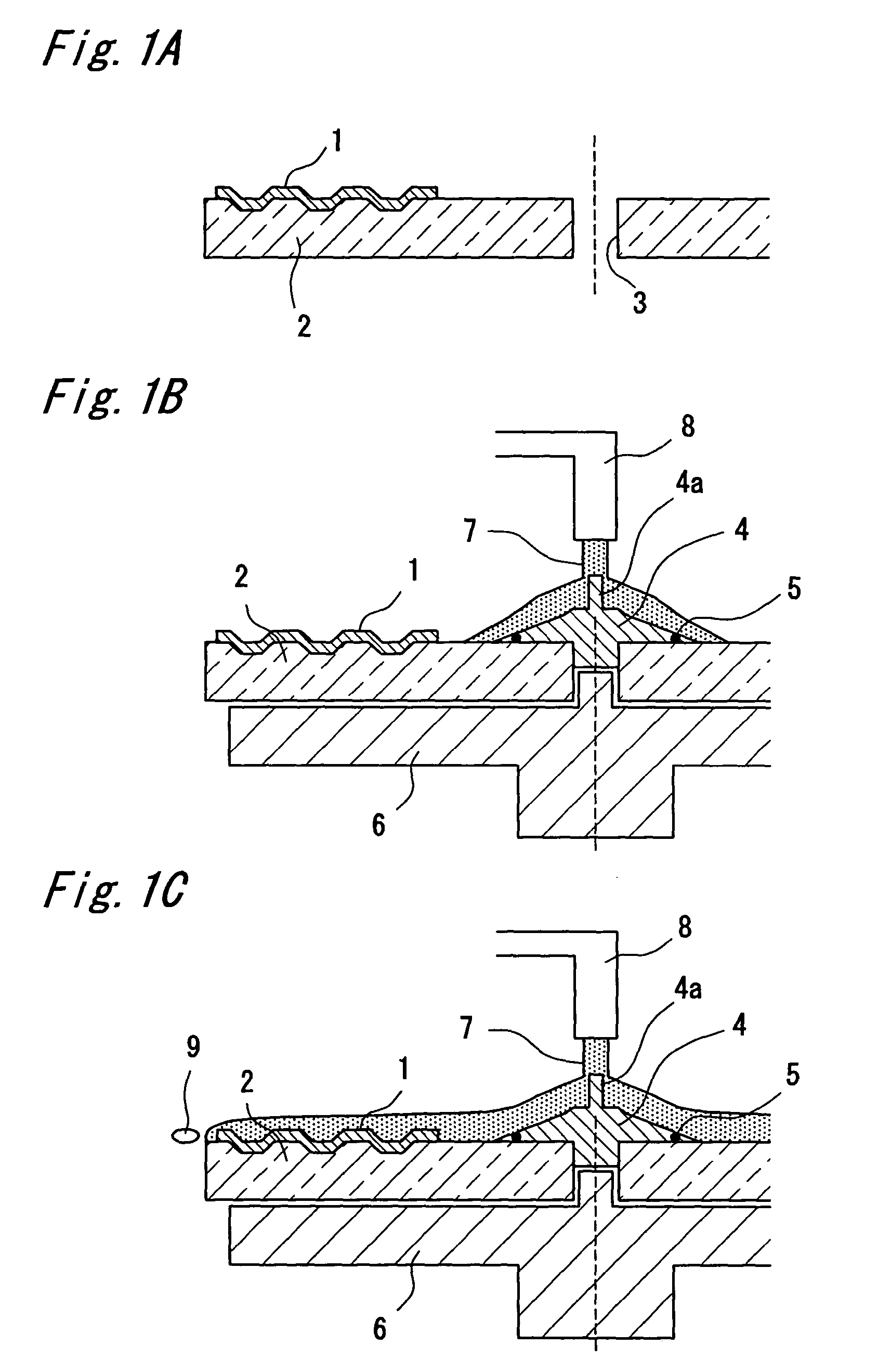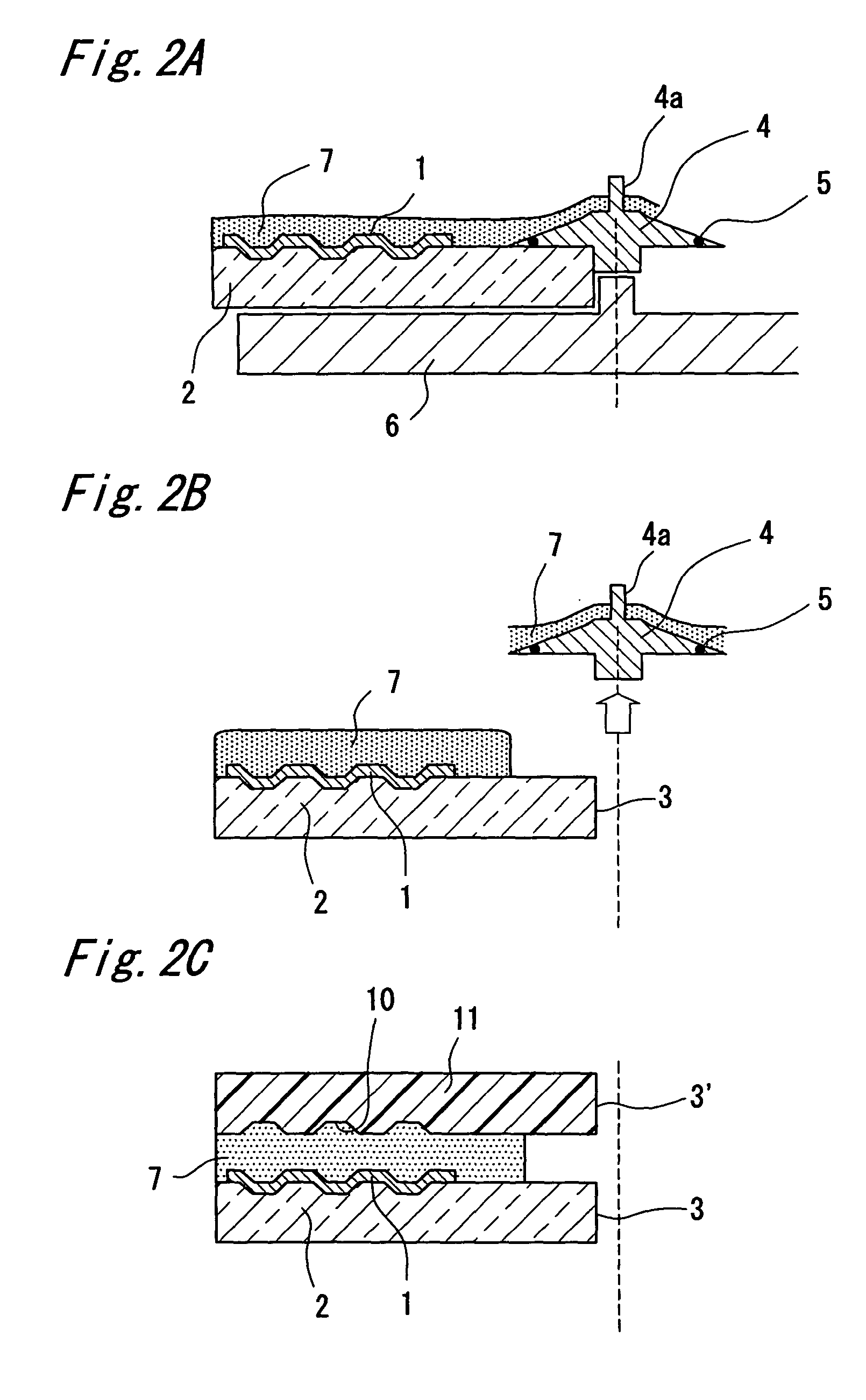Optical data recording medium and manufacturing method for the same
- Summary
- Abstract
- Description
- Claims
- Application Information
AI Technical Summary
Benefits of technology
Problems solved by technology
Method used
Image
Examples
first embodiment
[0089]A manufacturing method for an optical data recording medium according to a first embodiment of the present invention is described first below with reference to FIG. 1 to FIG. 3. The manufacturing method for this optical data recording medium broadly includes the following processes.
[0090](a) First, as shown in FIG. 1A, a substrate 2 that is 1.1 mm thick, 120 mm in diameter, and has a data recording layer 1 on one side (referred to below as the “recording-layer-side surface”) is prepared. A 15 mm diameter center hole 3 is formed through the thickness direction of the substrate 2 in the center of this substrate 2.
[0091](b) Then, as shown in FIG. 1B, the substrate 2 is placed on a rotary table 6 with the recording-layer-side surface facing up, and the center hole 3 is then closed from above with a cap 4. The cap 4 is metal and has a seal ring 5 made of Teflon (R), for example, formed where the cap 4 contacts the recording-layer-side surface of the substrate 2. A stud 4a is dispos...
second embodiment
[0126]An optical disc manufacturing method according to a second embodiment of the present invention is described next with particular reference to FIG. 4 and FIG. 5.
[0127]This embodiment differs from the optical disc manufacturing method of the first embodiment in that the positions of the substrate 2 and stamper 11 are reversed, the radiation curable resin is coated to the stamper 11, and the substrate 2 is then pressed to the resin-coated stamper 11.
[0128]In addition, the seal ring 5 is not provided on the cap 4. Instead, a magnet is disposed to the cap 4 so that the cap 4 is attracted to a corresponding magnet disposed to the rotary table 6 to improve adhesion and the seal between the cap 4 and substrate 2.
[0129]The optical disc manufacturing method of this embodiment is described in detail next.
[0130](a) First, as shown in FIG. 4A, a stamper 11 with center hole 3′ and pits 10 is prepared as described in the first embodiment above.
[0131](b) The stamper 11 is then placed on the r...
third embodiment
[0141]An optical disc manufacturing method according to a third embodiment of the present invention is described next with particular reference to FIG. 6 and FIG. 7.
[0142]This embodiment differs from the first embodiment in the formation of the intermediate layer of the two layer structure.
[0143]This optical disc manufacturing method is described below.
[0144](a) A radiation curable resin 7 layer is first formed on the substrate 2 as in the optical disc manufacturing method of the first embodiment (see FIGS. 1A to 1C and FIG. 2). The thickness of the radiation curable resin 7 layer, however, is thinner than in the first embodiment.
[0145](b) Next, as shown in FIG. 6A, the stud 4a of the cap 4 is held and pulled upward to move the cap 4 straight up and away from the substrate 2 (i.e., the stud 4a is pulled up to remove the cap 4 from the substrate 2).
[0146](c) The radiation curable resin 7 on the substrate 2 is then exposed to radiation (such as UV light) to cure the resin and form cur...
PUM
| Property | Measurement | Unit |
|---|---|---|
| Fraction | aaaaa | aaaaa |
| Thickness | aaaaa | aaaaa |
| Radius | aaaaa | aaaaa |
Abstract
Description
Claims
Application Information
 Login to View More
Login to View More - R&D
- Intellectual Property
- Life Sciences
- Materials
- Tech Scout
- Unparalleled Data Quality
- Higher Quality Content
- 60% Fewer Hallucinations
Browse by: Latest US Patents, China's latest patents, Technical Efficacy Thesaurus, Application Domain, Technology Topic, Popular Technical Reports.
© 2025 PatSnap. All rights reserved.Legal|Privacy policy|Modern Slavery Act Transparency Statement|Sitemap|About US| Contact US: help@patsnap.com



